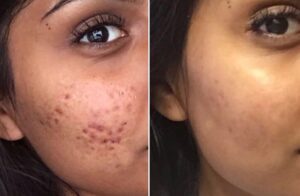Limited-time offer:
45% Off On Acne & Scars Treatment
Get A Free Consultation With Acne & Scars Expert
Say goodbye to your Acne & Scars
Microneedling
Laser Treatment
Carbon Facial
Chemical Peels
PlasmoDerm
Advance Acne Treatment
Safe & Effective Technology
At Clinic Next Face, we use advanced facial treatments to provide you with the results that can help you reduce your scars and remove all kind of active acne's.
- Long-lasting results
- Proven effective for all skin types
- Painless and safe with no side effects
- U.S FDA-approved procedure
- Acne & Scars Experts




Leaders in Aesthetics
Clinic Next Face offers a wide variety of surgery-free cosmetic procedures. Our mission is to help our patients achieve their aesthetic goals and feel fantastic about themselves. We are a team of certified and licensed dermatologists who work with cutting-edge aesthetic technologies to provide the best and safest cosmetic solutions. Contact our clinic today and our skilled doctors will help you to find the treatment that fits your needs and aesthetic goals.
Kind Word From Our Smooth Clients

“I had an Acne Treatment done by Clinic Next Face and I could see some amazing results within 2nd sitting. The doctor is really professional and have the best knowledge in terms of Facial Aesthetics”
Archana M.
“The whole process was extremely quick and not painful at all! Dr. Praharsh is very informative and helpful, while the clinic is always spotless. I have only good things to say about this place. My face completely changed and it looks way better now without scars.”
Sandhya G.
Acne is a common skin condition that occurs when hair follicles become clogged with oil and dead skin cells. There are several different types of acne, we treat:
Whiteheads: Small, white bumps that are closed at the surface of the skin.
Blackheads: Small, dark bumps that are open at the surface of the skin.
Papules: Small, red, raised bumps that can be tender to the touch.
Pustules: Red, swollen bumps with a white or yellow center filled with pus.
Nodules: Large, painful, solid bumps deep in the skin that can cause scarring.
Cysts: Large, pus-filled bumps that can be painful and lead to scarring.
Acne can also be classified based on the severity of the condition. Mild acne includes whiteheads and blackheads, while moderate acne includes papules and pustules. Severe acne includes nodules and cysts.
There are several possible acne removal treatments, including:
Topical treatments.
Oral medications:
Chemical peels.
Light therapy.
Extraction.
Laser therapy
- Subscision.
- Our signature PlasmoDerm Facial.
- CO2 Facial
The most effective treatment for acne will depend on the severity and type of acne, as well as the individual’s skin type and medical history.
There are several types of scars that can result from injury, surgery, or skin conditions like acne. Some of the most common types of scars we treat:
Atrophic scars: These scars are characterized by a depression or indentation in the skin and are commonly associated with acne scars.
Hypertrophic scars: These scars are raised and thick, and can be pink or red in color. They may continue to grow for several months after an injury or surgery.
Keloid scars: Similar to hypertrophic scars, keloid scars are raised and thick, but they grow beyond the boundaries of the original injury or surgery site.
Contracture scars: These scars result from burns or other injuries that cause skin to tighten, leading to limited mobility or function.
Stretch marks: These scars occur when the skin stretches rapidly, causing the collagen and elastin fibers to break.
Surgical scars: These scars result from surgical incisions and can vary in size and appearance.
Post-inflammatory hyperpigmentation: This is not a true scar but rather a darkening of the skin that can occur after an injury or inflammation.
The type of scar that forms depends on several factors, including the location and severity of the injury, skin type, and genetics.





